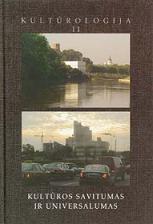PASAKŲ EVOLIUCIJA, ŽYDRŲJŲ EKRANŲ REVOLIUCIJA, DISNEY MĖSMALĖ IR VAIKYSTĖS KRIZĖ
THE EVOLUTION AND REVOLUTION OF FAIRY TALES,THE MINCING MACHINE OF DISNEY AND THE CRISIS OF CHILDHOOD
Author(s): Algė MakulavičienėSubject(s): Cultural Essay, Political Essay, Societal Essay
Published by: Lietuvos kultūros tyrimų
Keywords: fairy tales; culture industry; childhood; social functions; Neil Postman
Summary/Abstract: The point of this article is the relationship of fairy tales to children who nowadays are considered to be the main “consumers“ of them. It is generally assumed that fairy tales were created for children, but they were nothing of that sort for most of their existence, as the concept of childhood as such has appeared by the initiative of Enlightenment only. The article discusses how the social history of fairy tales paralleled the social history of childhood, reinforcing its construction since the Enlightenment and witnessing a kind of its “destruction“ in the twentieth century. The changing social functions of fairy tales throughout their history, the commercialisation of tradition by the Disney industry and the parallels between this process and the disappearance of childhood in Neil Postman‘s terms are being analysed. The psychoanalytical approach, and namely, Bruno Bettelheim‘s theory which analyses the importance of fairy tales for children is taken for a basis of the discussion. Childhood, peaceful, free of any troubles and innocent as it may look, has in fact so much to overcome, to understand and make peace with. A child, as he develops, must learn to understand himself better, cope with his inner problems, find meaning and have a positive hope for the future. Parents help a child with this task first. Second in importance is our cultural heritage, and when children are young, literature carries such information the best, first of all – fairy tales. As Bettelheim claims, fairy tales teach children to deal with inner problems by externalising internal processes, and promise that a happy solution will be found. They are future-oriented and guide a child, offering meanings on different levels, different for each person, depending on his/her interests and needs of the moment. But what forms happens to traditional stories when they are re-told in another time and cultural context, and in a different way (cartoons, movies, comics)? And what is the impact on children when the same fairy tales are modified through re-telling, fragmentation and animated adaptation? What is the role of Walt Disney Productions that are re-interpreting the most popular fairy tales, giving ready images and ruining the original stories, corrupting fantasy and supplying the audience with good entertainment, but bad replacement?
Journal: Kultūrologija
- Issue Year: 2004
- Issue No: 11
- Page Range: 179-189
- Page Count: 11
- Language: Lithuanian

